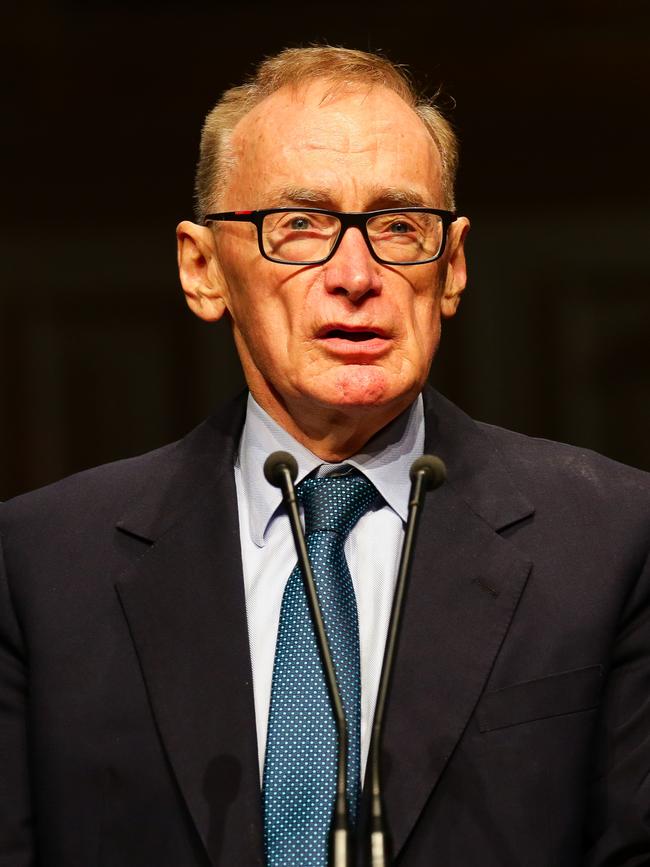James O’Doherty: The challenge isn’t over for Chris Minns, now he needs to deliver
Chris Minns managed to unite the labour movement to fight a common enemy, after years of infighting. His biggest challenge now will be to hold it all together, writes James O’Doherty
Opinion
Don't miss out on the headlines from Opinion. Followed categories will be added to My News.
At one point during the gruelingly long state election campaign, some Labor operatives started referring to Dominic Perrottet as “the kitchen sink”.
That is because Perrottet threw absolutely everything at his pitch for re-election, in a one-man travelling roadshow promising big ideas for the future.
For a time, the strategy seemed to be working. According to secret Liberal Party research, recounted to this column, voters liked Perrottet.
Bold ideas like a superannuation-style fund for newborns were popular with focus groups.
But, while Perrottet was popular, voters had turned off the Liberals.
The problem was worse in seats where Liberals were retiring, including Wakehurst on the Northern Beaches, Riverstone, South Coast and Parramatta.
The Liberal Party suffered double-digit swings against it in all those seats.
Liberal candidate Rory Amon suffered a swing of more than 20 per cent in Pittwater (where Rob Stokes retired) and on the current count, the seat of Ryde (vacated by Victor Dominello) is too close to call after the Liberals copped a swing of more than 9 per cent.

In the lead-up to the election, Liberal strategists played down the resignation of a raft of MPs as a natural “renewal” for the party.
But the Liberals were punished badly in every seat where the incumbent MP was retiring.
Strategists from both sides believe that Saturday’s election result was largely driven by political gravity weighing down on a long-term government.
The Liberal Party will commission a review into the election loss, which will no doubt find that the party never managed to effectively counter the narrative that after 12 years, it was time for someone else to have a go.
But whoever is brought on-board to conduct the post-mortem (former state director Tony Nutt is one option being discussed) must get to the bottom of why the Coalition is on the nose.
With the entire Australian mainland now painted red, the Liberals need to do some serious soul searching.

If there is any silver lining for the Coalition in NSW, it is that Labor is on track to govern in minority.
Because Labor is set to hold a number of seats with the slimmest of margins, Liberals are already talking up their prospects in four years’ time.
But to do that, the Coalition needs to work out what went wrong, so it can regain the trust of Western Sydney voters.
Those optimistic Liberals would do well to remember the 1995 election when Bob Carr won government with a majority of just one seat. He went on to become the longest continuously serving premier in the state’s history.
Before taking office, Carr, with his chief Bruce Hawker, worked on the theory that oppositions win elections — in contrast to the accepted wisdom that elections are lost by lazy governments.
On election night, Hawker told this column that the party’s victory on Saturday was down to the “incredible hard work” of a Labor opposition that took the fight to the Coalition.
“Labor worked incredibly hard over the last 18 months to make themselves a serious alternative to the Liberals,” he said.
“Labor was in a good position where they had a good leader, a great set of policies, which went to what people were concerned about: cost of living and privatisation.
“All they needed was for Chris Minns to be able to keep repeating that,” Hawker said.
Minns made the call very early on to build his campaign on three key platforms: privatisation, funding for essential services, and a “constructive” approach in which he refused to oppose the government for opposition’s sake. He was also relentlessly disciplined.
“The story of Chris Minns’ victory is as much the things he didn’t do as much as what he did,” one campaign insider told me.
Minns was quick to neutralise any issue that threatened to draw the campaign debate away from his central message, even if it meant internal blowback from his Labor colleagues.
At Labor’s state conference last year, Minns faced an internal factional revolt over his decision to back tough anti-protest laws.
Despite a lot of bluster from Labor’s left wing unions, Minns won the day and the issue was consigned to history.
After years of infighting, Minns has been able to unite parts of the labour movement in pursuit of their common enemy. His biggest challenge now will be to hold the party, and the unions, together.
The first test will be negotiating with union bosses who want better pay and conditions for their workers.
Unions NSW boss Mark Morey, hours after Minns claimed victory, declared that it was time to pay up and “get the (industrial relations) system back into shape so that it delivers real wage increases that don’t bankrupt the state”.
The new Premier will need to throw everything he has at delivering his core campaign promise without breaking the bank.
Even the kitchen sink.
Got a news tip? Email james.odoherty@news.com.au





